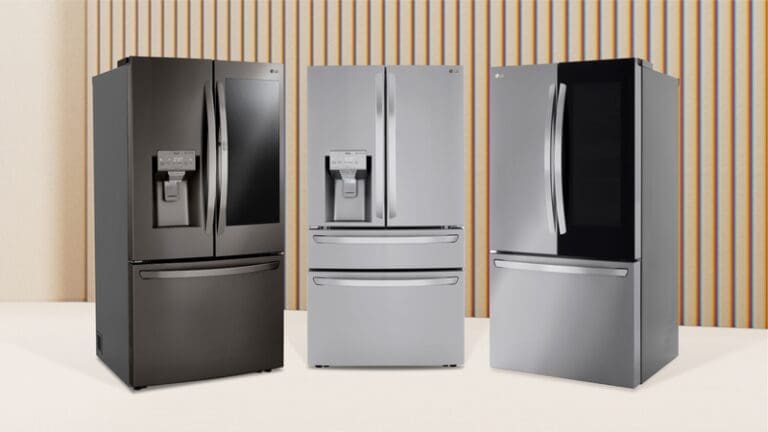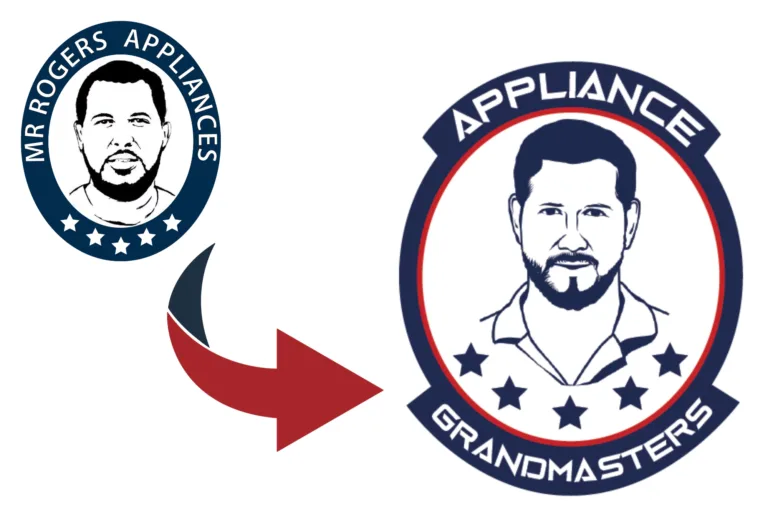You’re standing in your kitchen staring at a blinking display. The fridge isn’t cooling right, and now it’s showing some strange letters or numbers. You’re probably asking, “What do these GE fridge codes mean, and how do I fix it?”
This GE refrigerator error codes guide breaks down the most common messages, what they mean, and when to call a pro. Let’s help you understand your fridge—and avoid a costly food spoilage disaster.
GE refrigerators display error codes to alert you of specific issues like temperature problems, defrost errors, or fan malfunctions.
Some GE fridge diagnostic codes can be cleared with a reset, while others require professional repair.
Knowing what the code means helps speed up service and reduce downtime.
Appliance GrandMasters services GE refrigerators in Greenville SC, Asheville NC, and nearby areas.
Save time by referencing your GE refrigerator error codes manual and this guide before calling for help.
GE refrigerators are smart appliances designed to self-diagnose problems. But if you’re not familiar with the GE fridge diagnostic codes, those cryptic letters and numbers won’t mean much.
That’s where we come in. At Appliance GrandMasters, we’ve repaired hundreds of GE refrigerators across Greenville SC and Asheville NC by starting with the code. They do give us a starting point.
When you understand what the message means, you can decide whether it’s a quick fix—or time to bring in a licensed technician.

Most GE error codes appear:
On the digital display (on the control panel)
As blinking lights on LED models
Through manual test mode access
Tip: If your model doesn’t automatically show error messages, you may need to enter diagnostic mode using a button sequence. The process varies by model, so check your GE refrigerator error codes manual.
When your fridge displays a code, it’s trying to point you directly to the issue. Here’s a deeper look at the most common GE fridge codes, what causes them, and how to respond.
💡 Pro tip: If you’re ever unsure, refer to your GE refrigerator manual or call a certified technician to avoid misdiagnosing the issue.
Meaning: The control board isn’t detecting proper operation of the freezer fan.
Possible causes: Ice buildup around the fan, a broken fan motor, or wiring issues.
What to do: Open the freezer and listen for the fan. If it’s not running or is blocked by ice, try manually defrosting the freezer. If the code returns, the fan motor likely needs replacement. This is one of the most frequent codes we see in cold-weather months.
Meaning: Your fridge is struggling to defrost properly.
Possible causes: Failed defrost heater, faulty defrost thermostat, or control board glitch.
What to do: If you see frost building up in the freezer, try unplugging the unit for 30 minutes and defrosting manually. If the code reappears, professional repair is required to test the heater and sensor. Left unresolved, it can block airflow and cause the entire fridge to stop cooling.
Meaning: The ice maker motor isn’t completing its harvest cycle.
Possible causes: Jammed ice, motor failure, or a faulty sensor.
What to do: Remove the ice bin and check for stuck cubes. Reset the ice maker using your fridge’s control panel or power cycle. Still nothing? Time to test the ice maker module or motor.
Meaning: A general defrost error has been logged.
What to do: If you’ve recently lost power or had a power surge, try unplugging the unit and restarting it. If frost builds up again, the defrost timer, heater, or thermostat may need repair. This is a common issue on bottom-freezer and French-door GE models.
Meaning: The unit has failed to cool properly over a 24-hour window.
Causes: Failed compressor relay, refrigerant leak, dirty coils, or a blocked fan.
What to do: Clean the condenser coils first. If the code comes back, it’s a sign the sealed system may be struggling—this is where a technician can step in with proper tools and gauges.
Meaning:The freezer thermistor is reading out of range.
What to do: The temperature sensor may be misreading or disconnected. This can throw off defrost cycles and lead to inconsistent cooling. Sensor replacement is usually quick and affordable.
Meaning: Internal components aren’t communicating with the control board.
What to do: These GE fridge codes can be tricky. They often point to damaged wiring harnesses, failed boards, or voltage spikes. Try unplugging for 5 minutes. If the code returns, it’s time to call a certified repair technician for diagnostics.

⚠️ Reminder: While some codes may disappear after a reset, that doesn’t mean the problem is fixed.
Here’s how to stay ahead of error codes:
Clean coils every 6–12 months
Avoid overfilling shelves to allow airflow
Replace water filters every 6 months
Keep doors sealed and avoid propping them open
Use a surge protector to protect the control board
Schedule yearly maintenance with Appliance GrandMasters
You can also enroll to our Maintenance plan for home appliances
Q: What does upside down F and F mean on a GE refrigerator?
A: If you see what looks like an upside-down “F” or “FF” on your GE fridge display—don’t panic. That’s actually TurboCool or TurboFreeze mode kicking in. These features help cool your fridge or freezer compartments quickly, especially after loading warm groceries or keeping the doors open too long. It’s a normal part of your fridge working hard to stay cold.
Q: How do I clear the error code on my GE refrigerator?
A: First, make note of the exact code showing on the display. Then check your manual or the GE support site to understand what it means. In many cases, you can unplug the fridge for a few minutes to reset it. But if the code returns, it means there’s a real issue—like a seal gap, power glitch, or part failure—that needs to be fixed first.
Q: What does the red triangle with exclamation point mean on a GE refrigerator?
A: That red triangle is your fridge waving a warning flag. It usually means there’s a cooling issue or a water/ice problem—like a failing compressor, blocked air vent, faulty door seal, or something up with the water filter or ice maker. Check for other error codes or strange behavior and address the root cause before the issue gets worse.
Q: How do I reset a GE refrigerator control panel?
A: The easiest way to reset your control panel is to cut power to the fridge for 30 seconds—either by unplugging it or flipping the breaker. After that, plug it back in and give it a minute to reboot. That quick reset often clears display glitches or unresponsive buttons.
Q: How do I put my GE refrigerator in diagnostic mode?
A: It depends on the model, but most GE fridges let you enter diagnostic mode by holding down a combo of temperature buttons for a few seconds. Common combos include pressing the Freezer + Fridge temp buttons, or Water + Crushed Ice + Cubed Ice buttons at the same time. If done correctly, you’ll usually hear a beep or see a blinking “0” on the display.
Official Error, Fault or Function Codes from GE’s Official Website.
This GE refrigerator error codes guide gives you the upper hand. Understanding the messages your fridge sends can help you act fast, save money, and prevent bigger breakdowns.
Still unsure about your fridge’s behavior? Don’t guess—get help.
Book your GE fridge repair today at appliancegm.com
We proudly serve Greenville SC, Asheville NC, and nearby communities.
Don’t feel like tackling appliance maintenance on your own?
No worries!
At Appliance GrandMasters, we’ve got your back. Let the experts handle it, so you can enjoy the convenience of smoothly running appliances without the DIY stress.

Formerly known as Mr. Rogers Appliances, we rebranded our appliance repair company to Appliance GrandMasters in June 2020. Since then, we have focused on developing our brand to be customer-oriented.
Fixing appliances has become a passion for us. We enjoy challenges and we are always studying to become the very best.
We accomplish swift and top-notch service by employing efficient and friendly customer service procedures that guarantee accurate answers and solutions.
Our approach involves the careful selection and comprehensive training for the necessary skills to fulfill our customers’ needs. Through these strategies, we strive to consistently provide exceptional service.